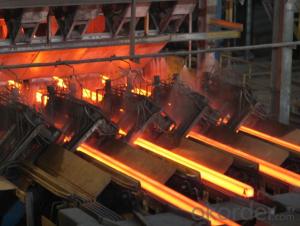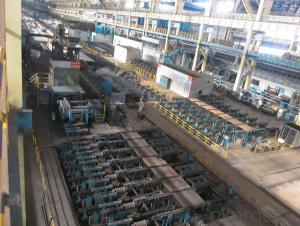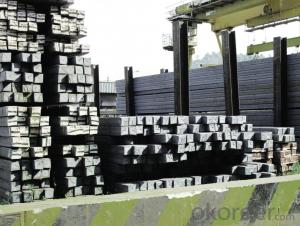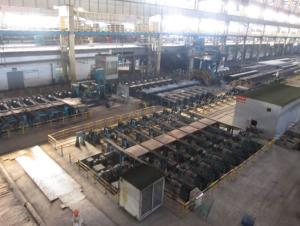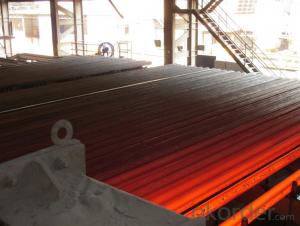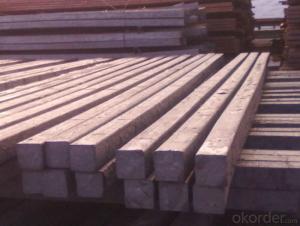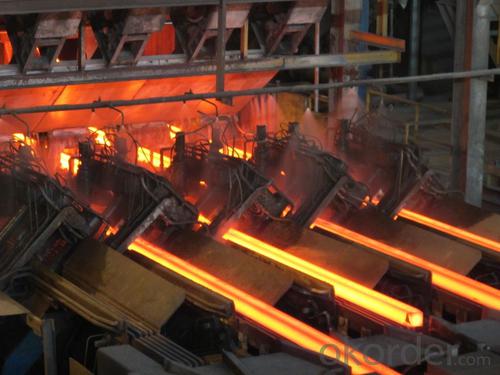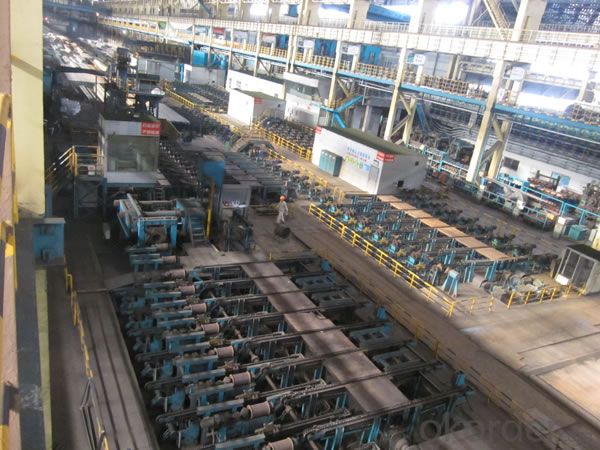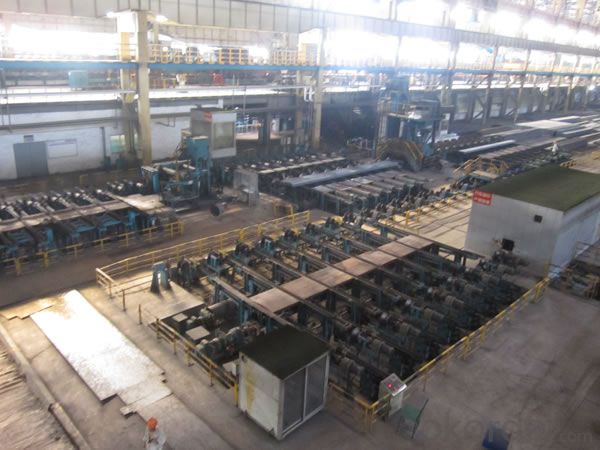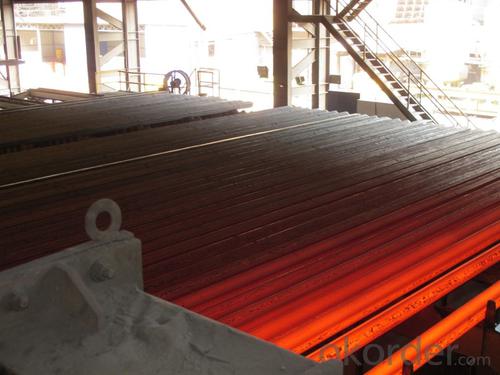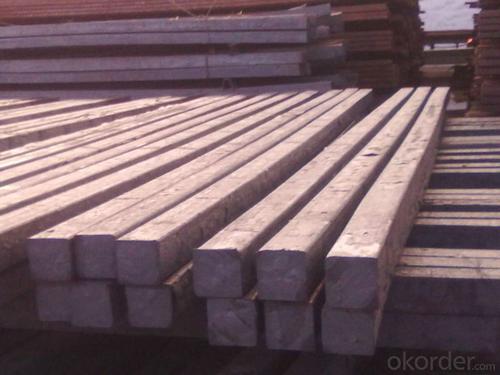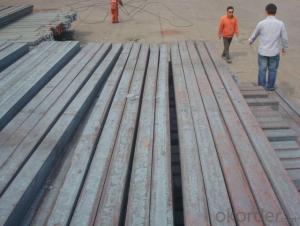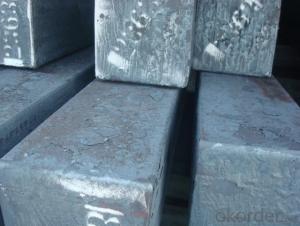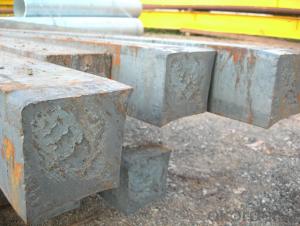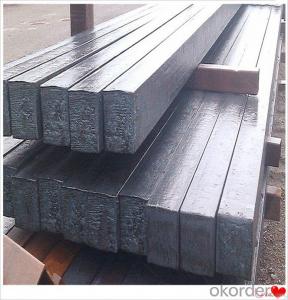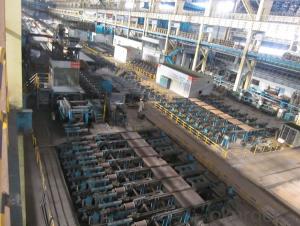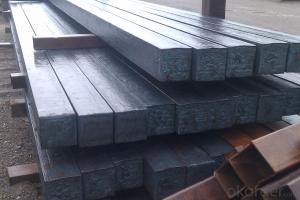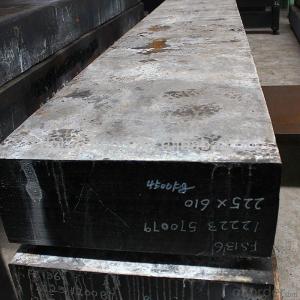Prime square alloy steel billet 105mm Q235
- Loading Port:
- Shanghai
- Payment Terms:
- TT OR LC
- Min Order Qty:
- 100 m.t.
- Supply Capability:
- 10000 m.t./month
OKorder Service Pledge
OKorder Financial Service
You Might Also Like
Structure of Prime square alloy steel billet 105mm Q235
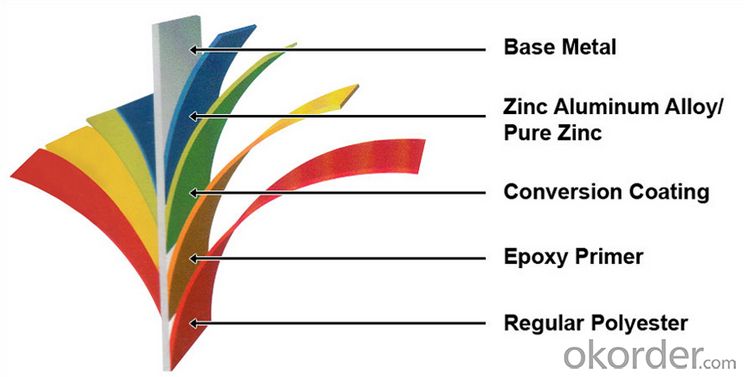
Description of Prime square alloy steel billet 105mm Q235
1) Excellent corrosion resistance: The zinc layer provides a good protection of Pre-painted Galvanizeed Steel Sheet.
2) High heat resistance: The reflective surface of the material aids in efficiently reflecting the sunlight away and in turn reducing the amount of heat transmitted. The thermal reflectivity converts into energy savings.
3) Aesthetics: Pre-Painted Galvanized steel sheet is available in plethora of patterns and multiple sizes as per the requirements that given by our customers.
4) Versatility: can be used in the various areas.

Main Feature of Prime square alloy steel billet 105mm Q235
Uncoated CR steel sheet
With the features of in line with the international highest standards in demension and shape, excellent surface finish and properties, the products are mainly used in home appliance and automobile industries.
Galvanized steel sheet(include HDG and EG)
With the features of good corrosion resistance, the products are mainly used in automobile, home appliance, electronics, building and machinery manufacture industries, etc.
Precoated steel sheet
With the features of enviromental protection and good processablility, long lasting surface durability, rich in colors, the products are maily used in building, home appliance and furniture industries, etc.
Applications of Prime square alloy steel billet 105mm Q235
1) Excellent corrosion resistance: The zinc layer provides a good protection of Pre-painted Galvanizeed Steel Sheet.
2) High heat resistance: The reflective surface of the material aids in efficiently reflecting the sunlight away and in turn reducing the amount of heat transmitted. The thermal reflectivity converts into energy savings.
3) Aesthetics: Pre-Painted Galvanized steel sheet is available in plethora of patterns and multiple sizes as per the requirements that given by our customers.
4) Versatility: can be used in the various areas.

Specifications of Prime square alloy steel billet 105mm Q235
Product | Billet |
Material Grade | SGCC / SGCH / DX51D+AZ, etc |
Thickness | 0.6-3.0mm |
Width | 500-1500mm |
Tolerance | Thickness: +/-0.02mm , Width:+/-2mm |
Zinc-coating | Z30-150g/m2 |
Technique | Raw material: Hot rolled steel coil --> Cold rolled_>hot dipped galvalume |
Surface | Dried, Chromated, Unoiled |
Spangle | Regular spangle , small spangle, zero spangle |
ID | 508MM 610MM |
Coil weight | 1-25MT |
Export package | Cardboard inner sleeves, Waterproof paper, galvanized steel covered and steel strip packed |
FAQ of Prime square alloy steel billet 105mm Q235
We have organized several common questions for our clients,may help you sincerely:
1. How Can I Visit There?
Our company is located in Tianjin City, China, near Beijing. You can fly to Tianjin Airport Directly. All our clients, from home or aboard, are warmly welcome to visit us!
2. How Can I Get Some Sample?
We are honored to offer you sample.
3. Why choose CNBM?
we always fix steel produce in container well to make it safe arrive at destination port
we always provide best and professional forward service for our buyer
we always apply 14days free detention for our buyers container in destination
we provide one set After-sales service for our buyer
we provide China inland steel market price report
we help our buyer become number one in local market .
- Q: What is the average lifespan of a steel billet in the automotive industry?
- The average lifespan of a steel billet in the automotive industry can vary depending on various factors. However, in general, steel billets are typically used as raw materials for the production of automotive parts such as engine components, chassis, and body structures. These parts are designed to have a long lifespan, typically lasting the lifetime of the vehicle itself, which can range from 10 to 20 years or more. The specific duration of a steel billet's lifespan within the automotive industry can also depend on the specific application and the level of stress or wear it undergoes during its service. For instance, engine components like crankshafts or connecting rods may experience higher levels of stress and wear due to the combustion process, potentially requiring replacement or refurbishment after a certain period. Additionally, advancements in material science and manufacturing technologies have led to the development of stronger and more durable steel alloys, further extending the lifespan of automotive parts. These advancements, coupled with regular maintenance and proper usage of the vehicle, contribute to the longevity of steel billets used in the automotive industry. It is essential to note that the lifespan of a steel billet can be influenced by other factors like corrosion, environmental conditions, and the overall quality of the manufacturing process. Therefore, manufacturers and automotive companies prioritize quality control measures to ensure the longevity and reliability of their products. In conclusion, while the specific lifespan of a steel billet in the automotive industry can vary, it is generally designed to last the lifetime of the vehicle, which can range from a decade to multiple decades. Advances in materials and manufacturing techniques enhance the durability and overall performance of steel billets, ensuring their longevity in automotive applications.
- Q: How to purchase suitable billet heating furnace
- Billet heating furnace manufacturers are many, the procurement of cost-effective equipment is the user's best choice. Choice can not be blind, you can not just look at the price, the choice of advice you consult more manufacturers, and then use the exclusion method to determine your final goal. Online can take a look at live video, more reference.
- Q: What are the safety precautions in handling steel billets?
- To prevent accidents and injuries, it is necessary to adhere to specific safety precautions when handling steel billets. Some of the essential precautions include: 1. Personal Protective Equipment (PPE): Always wear appropriate PPE, such as safety goggles, gloves, steel-toed boots, and protective clothing. This will safeguard against potential hazards like sharp edges, falling objects, and flying debris. 2. Lifting Techniques: Employ proper lifting techniques, such as bending the knees and using the legs to lift. This will help avoid strains or injuries to the back. If the billets are too heavy to lift manually, utilize mechanical lifting equipment like cranes or forklifts. 3. Secure Storage: Ensure that steel billets are stored securely and stably. This will prevent them from toppling or rolling, which can lead to injuries or damage to equipment and infrastructure. To keep the billets organized and secure, employ suitable storage racks, bins, or pallets. 4. Handling Tools: Safely handle steel billets using appropriate tools such as lifting hooks, clamps, or tongs. Avoid using your hands or body to move or reposition the billets, as this can result in pinching, crushing, or cutting injuries. 5. Clear and Well-Defined Work Area: Maintain a work area around the steel billets that is clear and well-defined. This will prevent tripping hazards. Remove any obstructions or debris that could cause slips, trips, or falls. 6. Communication and Training: Ensure that all personnel involved in handling steel billets receive sufficient training in safe handling procedures and are aware of potential hazards. Establish clear communication channels to coordinate movements and actions, especially when using machinery or working in teams. 7. Inspection and Maintenance: Regularly inspect the condition of the steel billets, lifting equipment, and storage racks to identify any potential safety issues. Promptly address any defects, damages, or signs of wear and tear to prevent accidents. 8. Emergency Procedures: Establish emergency procedures and ensure that all personnel are familiar with them. This includes procedures for handling accidents, injuries, spills, or other emergencies that may occur during the handling of steel billets. By adhering to these safety precautions, the risk of accidents and injuries can be minimized, creating a safer working environment for those involved in handling steel billets.
- Q: What are the different steelmaking processes used for producing steel billets?
- Steel billets can be produced using various steelmaking processes, each with its own advantages and limitations. These processes differ in terms of efficiency, cost-effectiveness, and the quality of the steel they produce. Some commonly used processes for steel billet production include: 1. Electric Arc Furnace (EAF): By melting recycled steel scrap using an electric arc, the EAF process offers flexibility and the ability to produce steel with different compositions. It is also considered environmentally friendly. 2. Basic Oxygen Furnace (BOF): The BOF process involves blowing oxygen into molten iron to remove impurities and control steel composition. It is commonly used for high-volume steel production and is known for its high productivity. 3. Induction Furnace: Through electromagnetic induction, the induction furnace process efficiently heats steel scrap. It is commonly used for small-scale steel production and offers precise temperature control. 4. Continuous Casting: Molten steel is poured into a water-cooled mold in the continuous casting process, resulting in solidified billets. This process boasts high production rates and consistent steel quality. 5. Ingot Casting: Molten steel is poured into molds to create ingots in the ingot casting process, which can later be processed into billets. While less commonly used due to lower efficiency and quality compared to continuous casting, it still has specific applications. The choice of steelmaking process depends on factors such as desired steel quality, production volume, cost considerations, and environmental impact. Steel producers carefully select the most suitable process based on their specific requirements.
- Q: What is the role of steel billets in the manufacturing of agricultural machinery?
- The manufacturing process of agricultural machinery relies heavily on steel billets, which are semi-finished steel products cast into a rectangular shape. These billets serve as the raw material for various components and parts. The utilization of steel billets presents numerous advantages in the production of agricultural machinery. Firstly, steel's exceptional strength and durability make it an ideal material for heavy-duty machinery that operates under harsh conditions. By starting the manufacturing process with steel billets, the final products acquire the necessary strength and durability to withstand the demands of agricultural activities. Moreover, steel billets offer versatility in design and fabrication. Agricultural machinery requires components of different shapes and sizes, and steel billets can be easily molded and machined to meet these requirements. This flexibility allows manufacturers to produce complex parts that are crucial for the efficient operation of agricultural machinery. Additionally, steel billets ensure consistent and reliable quality. The manufacturing process of steel billets adheres to strict quality control measures, ensuring uniformity and compliance with industry standards. This consistency in quality translates into reliable performance and longevity of agricultural machinery, reducing the need for frequent repairs or replacements. Furthermore, steel billets possess excellent resistance to corrosion and wear, which is vital for agricultural machinery exposed to various environmental elements. Using steel billets guarantees that the final products can endure exposure to moisture, chemicals, and abrasive materials commonly encountered in agricultural settings. To sum up, the strength, durability, versatility, consistent quality, and resistance to corrosion and wear make steel billets indispensable in the manufacturing of agricultural machinery. By employing steel billets as the raw material, manufacturers can produce agricultural machinery that meets the demanding requirements of the industry, ensuring reliable and efficient performance in various farming applications.
- Q: How are steel billets used in the production of industrial machinery?
- Industrial machinery production relies heavily on steel billets, which serve as essential components. These billets act as the raw material that undergoes shaping and transformation processes to produce a variety of machine parts. Typically, the billets are heated and then subjected to manufacturing techniques like forging, rolling, or extrusion. Forging is a commonly employed method in the production of industrial machinery. In this process, the billets are heated to high temperatures and shaped using compressive forces applied by a forging press or hammer. This enables the steel to be molded into desired shapes and sizes, resulting in components such as gears, crankshafts, or connecting rods. Rolling is another technique that utilizes steel billets in industrial machinery production. In this method, the heated billets are passed through a series of rollers to gradually reduce their thickness and shape them into long sheets or bars. These rolled steel products can then be further processed and used in the construction of machine frames, chassis, or structural components. Extrusion, on the other hand, is a technique that also involves steel billets. In this process, the billets are heated and forced through a die to create intricate shapes with consistent cross-sections. Extruded steel parts find extensive use in the production of machine components like tubes, pipes, or profiles. Overall, steel billets play a foundational role in the manufacturing of industrial machinery. They undergo various shaping and transformation processes to produce the necessary components that contribute to the overall functionality and durability of the machinery.
- Q: How are steel billets used in the manufacturing of tools?
- Steel billets are used in the manufacturing of tools as the starting material. They are heated, shaped, and machined into various tool components, such as cutting blades, drill bits, or molds, to achieve the desired shape and strength.
- Q: How are steel billets used in the production of agricultural implements?
- Steel billets are used in the production of agricultural implements by being further processed and shaped into various components such as plowshares, tillage tools, and blades. These billets serve as the raw material from which these implements are manufactured, providing the necessary strength, durability, and resistance to withstand the demanding conditions of agricultural operations.
- Q: What are the typical dimensions and weight of steel billets?
- The specific dimensions and weight of steel billets can differ depending on the requirements of the industry or application. However, as a general rule, steel billets are rectangular and have a length that is several times greater than its width and height. The width of steel billets usually falls within the range of 100mm to 200mm, while the height typically ranges from 100mm to 300mm. In terms of length, steel billets can measure anywhere between 3,000mm and 6,000mm. These dimensions may vary depending on the particular use, as different industries may have specific demands for their steel billets. In regards to weight, steel billets typically weigh anything from a few hundred kilograms to several metric tons. The weight is influenced by multiple factors, including the dimensions, density, and grade of steel utilized. It is vital to note that steel billets can be tailored to meet specific weight requirements, especially in industries such as construction, automotive, and manufacturing, where precise weight specifications are indispensable. In summary, the dimensions and weight of steel billets can fluctuate based on industry needs, but they generally maintain a rectangular shape and can range from a few hundred kilograms to several metric tons.
- Q: How do steel billets contribute to the overall vibration resistance of a structure?
- Steel billets contribute to the overall vibration resistance of a structure by providing a strong and rigid framework. The high strength and stiffness of steel billets help to absorb and distribute dynamic loads, reducing the amplitude and impact of vibrations. This structural stability minimizes the risk of fatigue and damage caused by vibrations, ensuring the long-term integrity and durability of the structure.
Send your message to us
Prime square alloy steel billet 105mm Q235
- Loading Port:
- Shanghai
- Payment Terms:
- TT OR LC
- Min Order Qty:
- 100 m.t.
- Supply Capability:
- 10000 m.t./month
OKorder Service Pledge
OKorder Financial Service
Similar products
Hot products
Hot Searches
Related keywords
